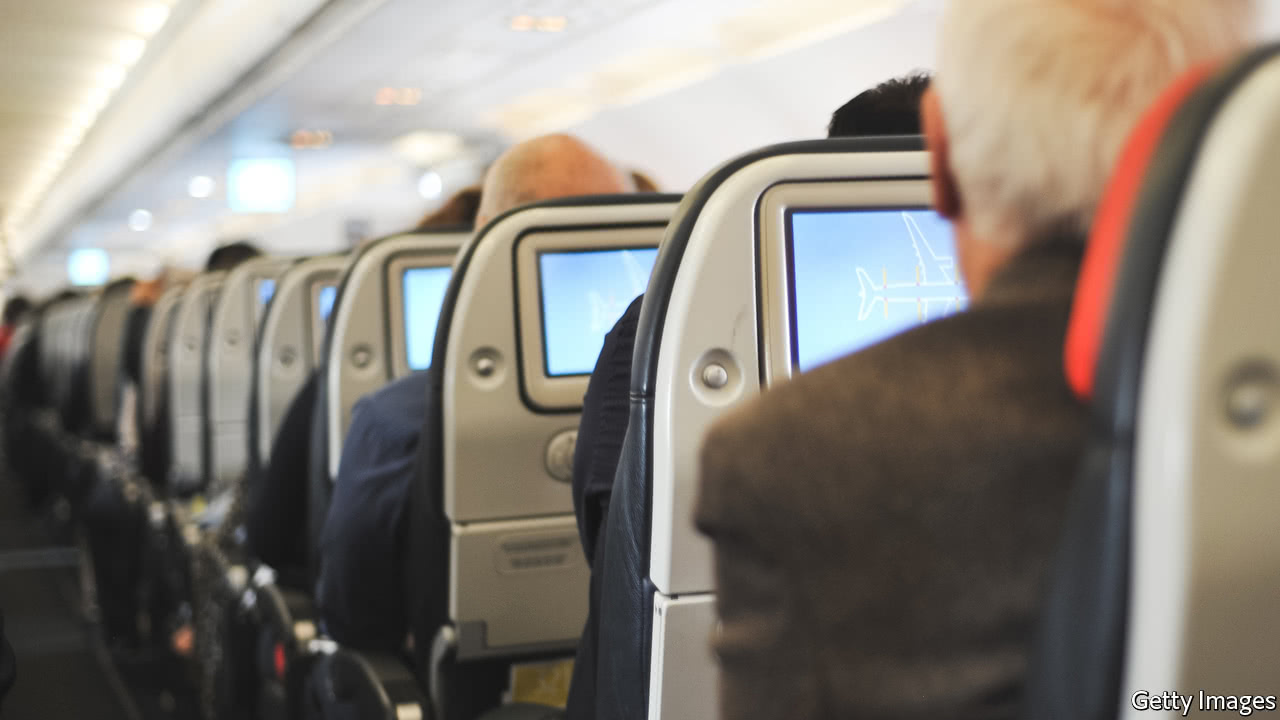
AIRLINES use all sorts of clever tricks to make more money from passengers. They charge extra for bags, for food and for selecting where you sit. Now they are embracing another strategy: packing more seats onto each plane. Last month American Airlines announced that it will insert 12 more seats, or two rows, into its economy class on its Boeing 737-800 fleet and an extra nine seats into its Airbus A321s. Similarly, JetBlue recently said it will cram 12 additional seats into its A320s.
But flyers do not like being packed ever-more tightly into the sardine tins that planes have become. This summer American Airlines announced that it would reduce the distance between rows—known as seat pitch—from 30 to 29 inches on some of its new planes. The public outcry was so heated that the carrier scrapped its plans, as Gulliver has previously reported. This February a member of Congress introduced legislation to mandate a minimum seat pitch on commercial flights, though it failed to become law. And in July, a federal judge ordered the Federal Aviation Administration to review a public petition which argued for seat-pitch regulation on health and safety grounds. The judge dubbed it “the case of the incredible shrinking airline seat”.
-
Theresa May’s weakness at home is slowing down the Brexit talks
-
How “regularising” undocumented immigrants brings benefits
-
Raila Odinga takes a gamble by threatening to boycott Kenya’s election
-
Explaining the Finnish love of tango
-
Airlines are trying to cram ever-more seats onto planes
-
Richard Thaler’s work demonstrates why economics is hard
But there are ways to get more passengers onto planes without sacrificing comfort or enraging the public. One is to use thinner seats. And manufacturers are racing to come up with innovative designs. Gone are the stiff metal backrests coated with thick padding. Many seats now have netted frames that require less cushioning. A California-based manufacturer says one inch of its honeycomb-design thermoplastic urethane cushioning can replace three inches of old foam padding.
Other space-saving ideas abound. Magazine holders are migrating from the bottom of the back of the seat, where they bumped knees, to the top. Some manufacturers are contouring their seats to match the curve of a plane’s walls and maximize width. Mark Hiller, the boss of Recaro Aircraft Seating, a German firm, told the Chicago Tribune that new designs can make a 27-inch pitch feel as comfortable as a 29-inch one.
This could be a boon for seatmakers. Aircraft interiors industry, which includes seat manufacturers, is worth $17bn today and is forecast to grow to $29bn by 2021, according to the Los Angeles Times. That is partly explained by high demand for new planes: Boeing expects airlines to require more than 37,000 jets over the next two decades. But it is also because of the need for more compact seats.
Few would describe a 29-inch pitch—which leaves maybe an inch of spare legroom for a 5-foot-11-inch man—as comfortable. Gulliver wishes that manufacturers were instead working to make 33-inch pitches feel like the 35 inches of yesteryear. But packing in more seats has become a necessary step for airlines to keep fares low. For flyers who want to pay as little as possible, those cramped knees are worth it. And for those who do not, there is always an upgrade to business class.
Source: economist
Airlines are trying to cram ever-more seats onto planes